An excerpt from Chris Knox: Not Given Lightly, by Craig Robertson (Auckland University Press, 2025), published with permission.
--
In the late 1980s Chris Knox worked out his solo songs at home with his single barre chord and then road-tested them in live performances. Songwriting at home meant sitting in his front room with his guitar or in front of the piano in the hallway and seeing what happened. This wasn’t a daily or even weekly thing. Months could go by before he might wake up and think, today I’m going to try to write some songs.
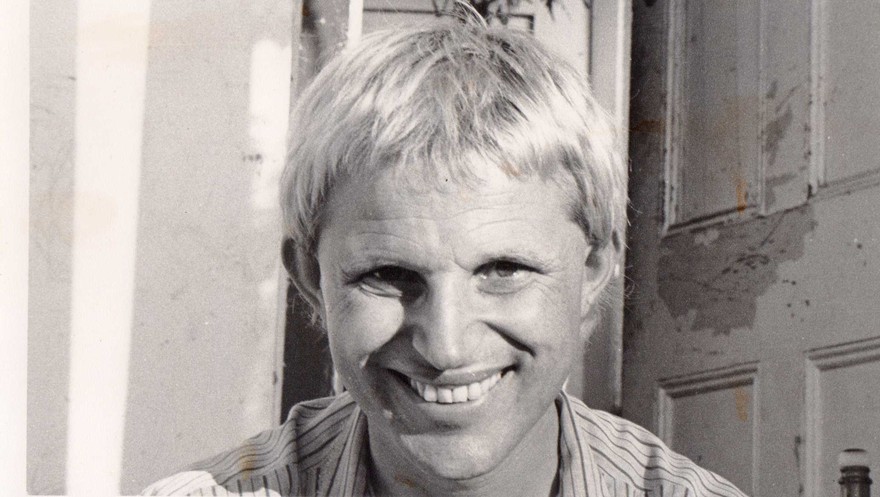
Chris Knox, 1989. - Flying Nun
Songwriting was partly a physical process, he told Russell Baillie of the NZ Herald: “It’s just feeling your shoulders flop around and letting your mind feel a bit soggy and your fingers go where they want to go – that generally seems to be the best results and things that come quickly tend to be better. If you have to actually work on something it sounds like it’s been worked on.” He continued to value immediacy, wanting to capture an idea as close to its raw form as possible. Lyrics were initially driven by the sounds of the words. By the second or third verse he usually had a sense of what the lyric might be about. This typically meant rewriting the earlier verses – not too much. The aim was to try to get the lyrics in one burst. The natural flow also announced their honesty.
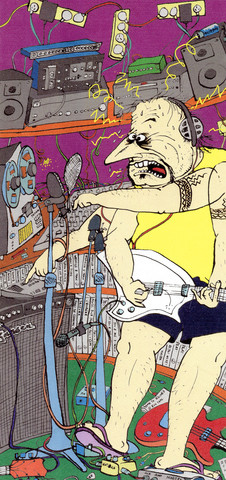
Chris Knox recording at Hakanoa Street, c.1990s. - Drawing by Chris Knox
He put more initial thought into the lyrics for ‘Not Given Lightly’. Strumming away on some chords, he came up with a doo-wop progression so corny the only thing he could think to do over it was a love song. He had never written a proper one before, and had no desire to do so. They represented so much of what he hated about pop music – the hackneyed way a pop song had to be about love just as people thought comics had to be about superheroes. But he had this great chord progression ... as he started to sing and think about words a lyric emerged. Not the universal lyric usually found in love songs, and not one that represented love as always perfect. He made it specifically about Barbara Ward. He thought this might make a love song more relatable. His belief in the value of the immediate moment became a belief in the power of specific feelings rather than general statements.
It became a song for “John and Liesha’s mother” in which Knox treated love as a relationship that changed over time: “When we’re alone I cannot always face you / Maybe my mood won’t let these arms embrace you / But that doesn’t mean my love’s somehow diminished / Give me the time to show our love’s unfinished.” He thought the finished song was “fucking cute”; it made him giggle a little, he recalled on RNZ in 1998. But he had written a love song he could handle. Ward also came to like the song, Knox said in Through the Eyes of Love, a documentary about love songs. There had been other Knox songs about aspects of their relationship, but ‘Not Given Lightly’ became a snapshot of a particular moment.
A love song was something Knox could never write for Tall Dwarfs. Writing personal lyrics didn’t make sense if he was making music with someone else. His Tall Dwarfs lyrics had become more political, and he would check in with Bathgate about them. On a solo record there was no checking. The result was a more direct, clearly autobiographical set of lyrics, with none of the general philosophising and B-grade horror of Tall Dwarfs recordings.

Chris Knox - Seizure (Flying Nun LP, 1989)
Seizure had a directness, clearly defined songs and great vocals from Knox. His singing was a constant positive in reviews – to some extent this mattered more than the lyrics themselves. Knox also liked the sound of the record. In 2001 he said to Steve Silverstein of Tape Op he didn’t think he ever recaptured the great guitar sound. This was partly because – for all his status as “a man with a 4-track” – he recorded most of Seizure in a studio. Knox’s 4-track was no longer trustworthy and he felt comfortable going to a studio because he wouldn’t – and didn’t – have to spend a lot of time there. At Mascot he recorded and mixed nine songs in 14 hours with engineer Victor Grbic. The songs were already written, and the backing tracks were tape loops, so Knox just played along and put the vocals on top. He took advantage of Mascot’s good gear and long corridors and other interesting places to put microphones – places not designed for recording, like the rooms at Hakanoa Street. A couple more songs were done at Flying Nun favourite The Lab. The remaining four songs – ‘Uncle Tom’s Cabin’, ‘And I Will Cry’, ‘Voyeur’, ‘Ache’ – became the last recordings Knox released from his 4-track. All the recording was done in February 1989.
The cover and videos foregrounded the solo aspect of Seizure. The closest Tall Dwarfs had come to putting themselves on the cover was a Knox drawing on Throw a Sickie. This one featured a photograph of Knox – admittedly in black and white at the bottom left, with Knox’s blackened eyes giving him a horror-movie effect. The lettering was his favoured yellow on black.
New to Seizure was a possible hit single. In 2009 he told Roger Shepherd he believed ‘Not Given Lightly’ was the “most sugar-coated melody” he’d ever come up with. Flying Nun agreed it had hit potential and released it as a 12-inch single. TVNZ was also on board. They gave him a crew for an afternoon. Knox kept the video simple, singing to the camera to underline the personal nature of the song. The idea was to film the song twice, each time starting in extreme close-up on his eyes and mouth, and gradually pulling back to reveal a group of friends he had invited over. In the final edit Knox combined the two versions, cutting between them on the beat. He considered the result just okay; TVNZ screened it on the music video show CV.
Although the interest in ‘Not Given Lightly’ encouraged Knox to think mainstream radio stations could play it without “offending” listeners, in October 1990 he said he wasn’t at all surprised they didn’t. On the off-chance the 12-inch single would sell, he had put what he considered the best songs from Songs For Cleaning Guppies on a 33rpm B-side to show newcomers another side to him. The song didn’t chart. Knox remained ambivalent as ever. As much as he wanted this one to be different, he knew the radio and music industries didn't share his love of the “great song” on its own terms. Of course, he could redo the song in a more commercial fashion and get all the notes in the right place, but what would be the point? He said to Garth Cartwright, in Metro, that he wanted to record songs and affect people without playing the way “they” want you to play.
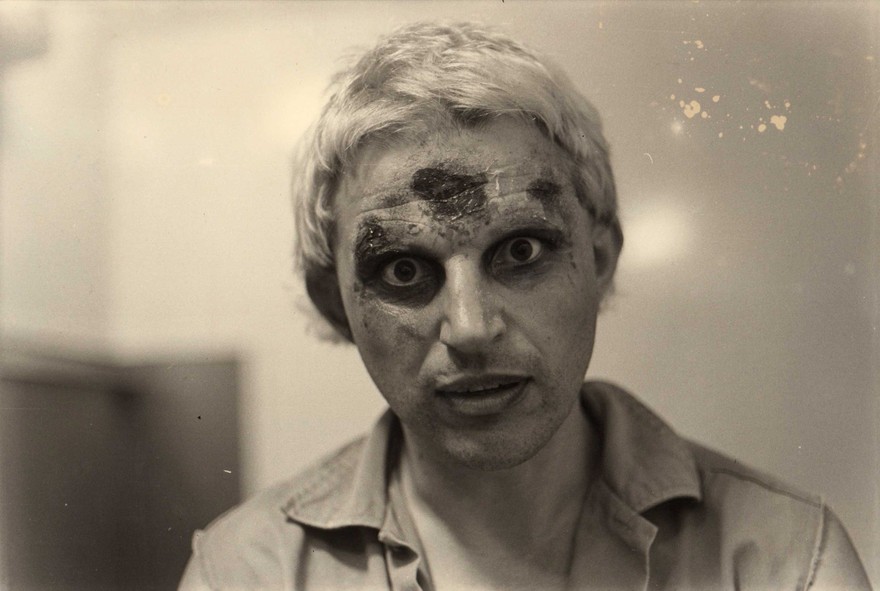
The original photo used on the cover of the vinyl version of 1989's Seizure album
In Australia the response was a little different. In a larger country with more diverse radio stations, ‘Not Given Lightly’ got enough airplay to suggest some promotion could make it a hit. The single and Seizure were released in the middle of 1990. The album had a new cover – alternating bands of black and yellow, and no photo. A somewhat reluctant Knox returned to Australia for the first time since Toy Love to find that a lot of things can change in a decade. He played five gigs in 500-capacity venues in Melbourne, Sydney, and Brisbane in a week during October. He also met Flying Nun’s new partners Mushroom Records. Although sceptical of the label, he got on well enough with the Mushroomers he met. They liked him, too, quickly discovering what Flying Nun knew: Knox was up for pretty much anything when it came to promotion. While he didn’t have a similar “hit” in the next few years, he recorded his albums for next to nothing and he continued to actively promote all his releases. Mushroom also recognised that he was Flying Nun’s version of a legacy artist.
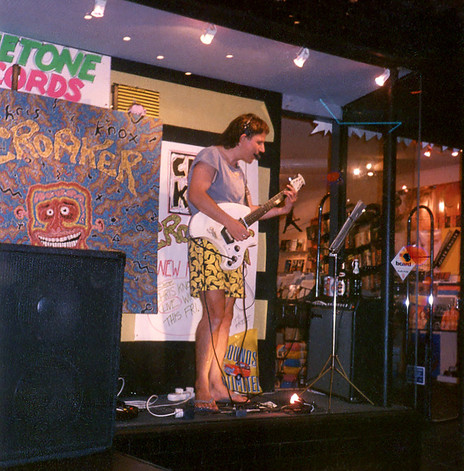
Chris Knox promoting Croaker, TruTone Records, June 1991.
The tour generated a lot of good press among those previewing the shows, most of it focused on ‘Not Given Lightly’ or, as a Brisbane writer called it, “one of the greatest love songs ever written”. The live reviews were less enthusiastic but still positive as people tried to make sense of Knox. Susan Ryan of Sydney’s Drum Media asked, how do you describe someone who in his second encore decided it was time to write a song, polled the crowd for a topic and created a song about masturbation? Maybe, commented a Time Off writer, he’s “slightly loopy, a mite too intelligent for his own good, and rather talented.” Or someone who “squirrels away potential chart crushers under hacking guitar riffs and a sense of the absurd so twisted that it might be actual sadism or psychosis”. Time Off still concluded its review with: “Chris Knox is an acquired taste in that you have to listen to one of his songs to acquire it. Long live the godfather” – a reference to the most quoted line from Knox’s press kit, which called him the “godfather of New Zealand’s independent music scene”. ‘Not Given Lightly’ remained a radio hit of sorts.
--
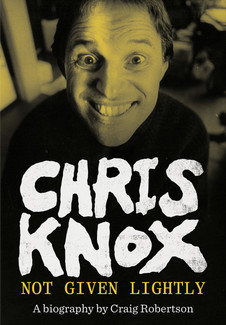
An excerpt from Chris Knox: Not Given Lightly, by Craig Robertson (Auckland University Press, 2025), published with permission.